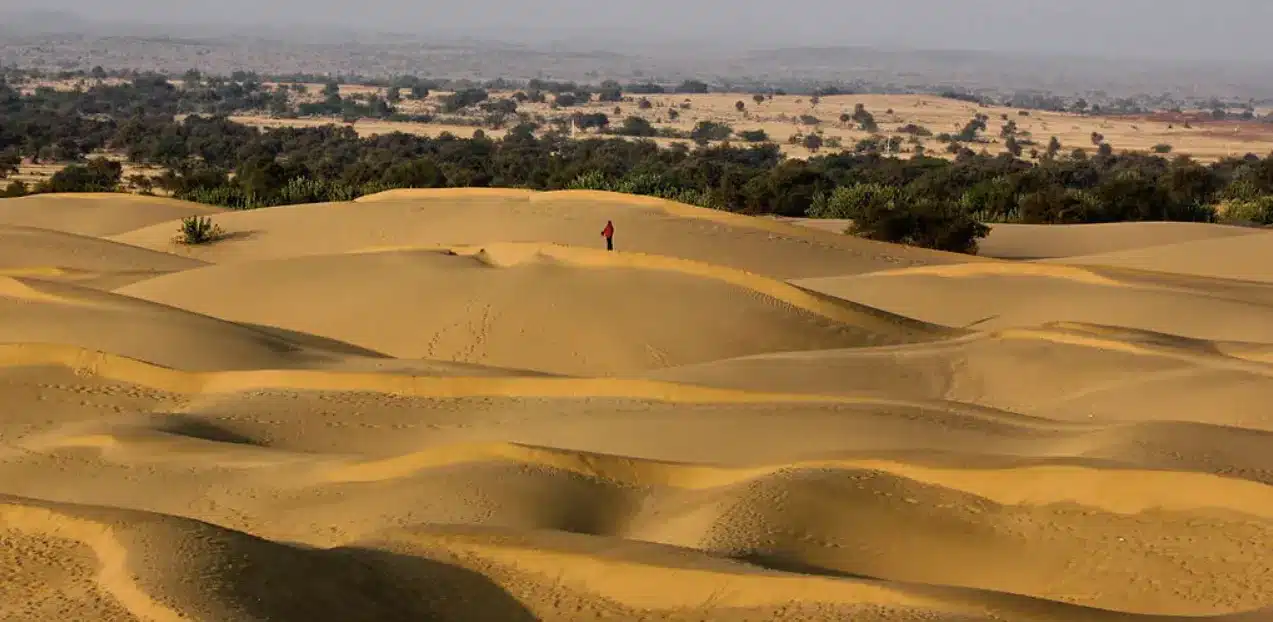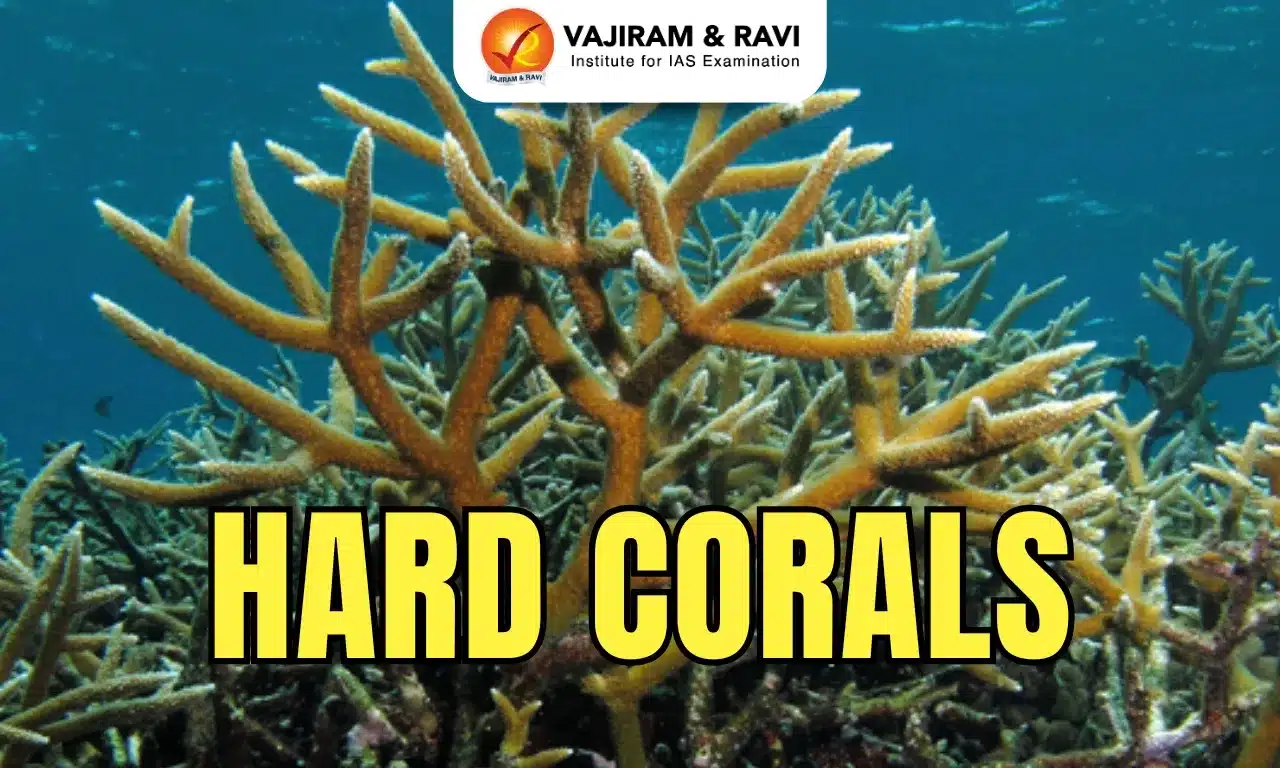About Thar Desert
- The Thar Desert, also known as the Great Indian Desert, is an arid region of rolling sand hills on the Indian subcontinent.
- It is one of the largest subtropical deserts in the world.
- Location: It is located partly in northwestern India, and partly in eastern Pakistan.
- It extends across the states of Rajasthan, Gujarat, and Haryana in India, and the provinces of Sindh and Punjab in Pakistan.
- It covers more than 77,000 square miles (200,000 sq. km).
- The majority of the Thar desert is in India (15 percent lies in Pakistan).
- It is bordered by the irrigated Indus River plain to the west, the Punjab Plain to the north and northeast, the Aravalli Range to the southeast, and the Rann of Kachchh to the south.
- The desert is separated from the Greater Rann of Kutch to the west by the low-lying marshy lands of the Luni River.
- Climate:
- The desert features a hot and arid climate, with temperatures often reaching over 50 degrees Celsius during the day and dropping significantly at night.
- Rainfall is scarce, with the majority of the desert receiving less than 50mm of rain annually.
- Landscape:
- It is characterized by a vast and rugged landscape, with a variety of different terrains.
- It is known for its vast expanses of rolling dunes, which can reach heights of up to 200 meters.
- The desert is also characterized by rocky outcroppings, which are clusters of large rocks that rise from the desert floor.
- It is also home to large salt flats, which are areas of flat land covered with a layer of salt.
- Large, flat plains, which are covered with a thin layer of soil and vegetation, are also found here.
- Mineral Resource:
- It is rich in a variety of minerals, including one of the largest coal reserves in India.
- It is also a major source of gypsum, Limestone, salt, Bauxite, silica, etc.
Q1: What is a Dune?
A dune is a mound of sand that is formed by the wind, usually along the beach or in a desert. Dunes form when wind blows sand into a sheltered area behind an obstacle.
Source: Shifting sands: why the Thar desert on the borders of India and Pakistan is getting greener
Last updated on December, 2025
→ Check out the latest UPSC Syllabus 2026 here.
→ Join Vajiram & Ravi’s Interview Guidance Programme for expert help to crack your final UPSC stage.
→ UPSC Mains Result 2025 is now out.
→ UPSC Notification 2026 is scheduled to be released on January 14, 2026.
→ UPSC Calendar 2026 is released on 15th May, 2025.
→ The UPSC Vacancy 2025 were released 1129, out of which 979 were for UPSC CSE and remaining 150 are for UPSC IFoS.
→ UPSC Prelims 2026 will be conducted on 24th May, 2026 & UPSC Mains 2026 will be conducted on 21st August 2026.
→ The UPSC Selection Process is of 3 stages-Prelims, Mains and Interview.
→ UPSC Result 2024 is released with latest UPSC Marksheet 2024. Check Now!
→ UPSC Prelims Result 2025 is out now for the CSE held on 25 May 2025.
→ UPSC Toppers List 2024 is released now. Shakti Dubey is UPSC AIR 1 2024 Topper.
→ UPSC Prelims Question Paper 2025 and Unofficial Prelims Answer Key 2025 are available now.
→ UPSC Mains Question Paper 2025 is out for Essay, GS 1, 2, 3 & GS 4.
→ UPSC Mains Indian Language Question Paper 2025 is now out.
→ UPSC Mains Optional Question Paper 2025 is now out.
→ Also check Best IAS Coaching in Delhi

















